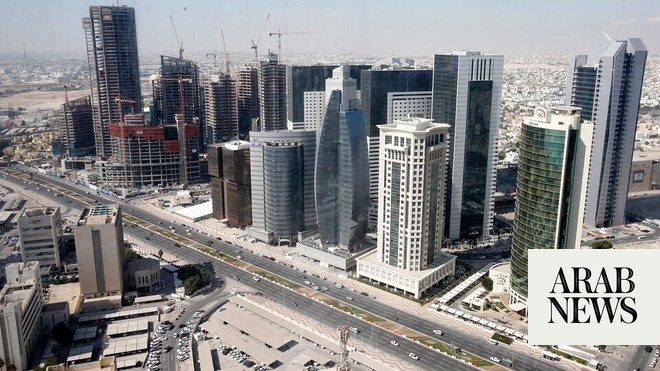RIYADH: Remittances from Saudi Arabia abroad reached $3.2 billion in June, up 11.32 percent year-on-year, according to the latest data from the Saudi Arabian Asset Management Agency (SAMA).
These figures highlight the important role that the Kingdom of Saudi Arabia plays in global remittance flows and are evidence of its influence on the economic dynamics of the region.
According to the latest SAMA announcement, remittances sent abroad by the Kingdom’s citizens decreased by 1% year-on-year to a total of SR51.2 billion, following the peak recorded in May, the highest in a year and a half.
Saudi Arabia has long been an attractive destination for expats looking for lucrative jobs. With its robust economic growth and high salaries, the kingdom offers an attractive destination for professionals from around the world.
The average executive salary in Saudi Arabia is over $100,000 per year. This is not only the highest in the Middle East, but also sets a global benchmark. Such competitive compensation is a major attraction for expatriates, contributing to the Kingdom’s significant remittance outflow.
The increase in remittances can be attributed to several interrelated factors. The recovery of the job market after the COVID-19 pandemic has led to increased employment opportunities, which in turn has led to higher earnings for expatriates. In addition, the Saudi government’s strategy to attract and retain foreign workers (including favorable employment policies and incentives) has further strengthened the expatriate workforce.
Technological advancements have also played a significant role in driving this growth. Innovations in financial technology and mobile banking have made sending money abroad faster, safer, and less expensive. The advent of digital payment systems and mobile apps has also helped to increase remittance volumes, making it easier for expats to transfer funds.
Saudi Arabia’s demographics provide additional context for this surge in remittances. Non-Saudis make up 41.6% of the kingdom’s population, or about 13.4 million people. This diverse expat community includes significant numbers from countries such as Bangladesh, India, Pakistan, Yemen, and Egypt. Other countries contributing to the expat population include Sudan, the Philippines, Syria, Nepal, and Jordan.
The high net migration rate, averaging 79 people per day, reflects Saudi Arabia’s strong economic attractiveness and its role as a global labour hub.
Saudi Arabia and the UAE play a key role in the global remittance landscape. In 2022, remittance outflows from these two countries totaled approximately $79 billion. Saudi Arabia alone accounted for $39.3 billion, highlighting the significant impact remittances have on the economies of recipient countries. For example, Pakistan and Bangladesh, major recipients of Saudi remittances, benefit enormously from these financial inflows, which support households and promote economic development.
Saudi Arabia continues to be the largest source of remittance inflows in Pakistan. From July 2022 to March 2023, the kingdom contributed 50% of total remittances to the country. This is a continuation of a long-standing trend, as Saudi Arabia has historically been a major destination for Pakistani workers. In 2023, approximately 427,000 workers were employed in Saudi Arabia, indicating the kingdom’s continued role as an important employment hub for overseas workers from South Asian countries.
Similarly, Bangladesh has been a significant recipient of remittances from Saudi Arabia. The financial support of Bangladeshi expatriates contributes to the improvement of living standards and economic stability in the home country. Remittance-receiving households in Bangladesh use these funds to purchase essentials such as food, education, and healthcare, as well as to invest in land and modern agricultural technologies, thereby promoting economic development.
Globally, remittance markets have shown resilience despite economic uncertainty. While there were initial concerns about a recession during the pandemic, remittances have remained relatively stable. India, the world’s largest recipient of remittances, experienced only a slight decline during the pandemic and has since recovered in the years since.
The country was expected to face a significant decline of 23% due to the economic downturn and the drop in oil prices in the host country. However, it defied expectations and maintained its position as the largest recipient, accounting for 12% of global remittances, with a 0.2% decrease in 2020 and an 8% increase in 2021.
The resilience of remittances demonstrates how important they are in supporting economies and households in low- and middle-income countries.
The broader global trend toward digital and mobile remittances is also noteworthy. According to a February 2024 study by IBS Intelligence, the global digital cross-border remittance market was valued at $148 billion at the beginning of the year. The market is expected to grow at a CAGR of 12.58% to reach approximately $340 billion by 2030. This growth is driven by increased mobile phone usage, online shopping, and demand for fast, secure, and convenient remittance services.
In summary, the growth of remittances from Saudi Arabia demonstrates the Kingdom’s pivotal role in the global remittance landscape. High salaries, favorable employment conditions, technological advancements, and a significant expatriate population combine to drive capital flows to countries around the world. This trend not only reflects the region’s economic dynamism, but also highlights the important support that expatriates provide to their families and economies back home.
